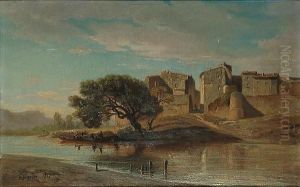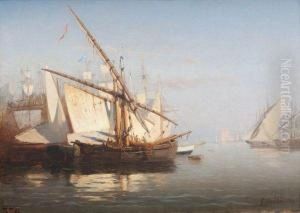Pierre Gustave Girardon Paintings
Pierre Gaspard Girardon, commonly known as François Girardon, was a French sculptor of the seventeenth century. Born on March 10, 1628 in Troyes, he became one of the most prominent artists of his time, especially noted for his contributions to the Baroque style of sculpture. He was a leading figure in the court of Louis XIV and played a significant role in the artistic developments of the period, particularly in the design and decoration of the Palace of Versailles.
Girardon was sent to Paris to study art at a young age and then moved to Rome to further his education. In Rome, he was influenced by the works of classical antiquity as well as the Baroque masters active during that period. After returning to France, his talent caught the attention of Louis XIV's finance minister, Jean-Baptiste Colbert, who was responsible for much of the artistic patronage of the era. Girardon’s association with Colbert and later with Charles Le Brun, the king's first painter, significantly boosted his career.
His works are characterized by a blend of classical elegance and baroque dynamism, with a particular talent for creating lifelike bronze statues. Perhaps one of Girardon's most famous works is the statue of Apollo served by the Nymphs in the Grotto of Thetis at Versailles. He also created the monumental equestrian statue of Louis XIV, which was unfortunately destroyed during the French Revolution.
Girardon was also responsible for the tomb of Cardinal Richelieu in the Church of the Sorbonne, a masterpiece of French baroque sculpture. His influence extended beyond his own creations; he was also an art collector and his collection included important antique sculptures that influenced French artists for generations to come.
François Girardon died on September 1, 1715, in Paris. His legacy lived on through his profound influence on French sculpture and his contributions to one of the most significant periods of French art, the Grand Siècle of Louis XIV. Today, his works can be found in several major museums, and his impact on the development of French art is still recognized by art historians and enthusiasts alike.

